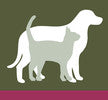FAQs: Snoot Loop head collar


How to fit all sizes of Snoot Loops.
To download and print a PDF for fitting and training using a Snoot Loop head collar: click here
Place on and off dog several times while fitting during steps 1-3, in the order below Do not adjust while it is on the dog.
2. Make and adjust a knot in the nose loop - the jaws must be able to fully open to a full yawn position for comfort. The dog should not be able to paw the nose loop into its mouth as it can chew and destroy the Snoot Loop.


3. Adjust Side straps that are forward facing in the adjustment slide until both sides are level and prevent the nose loop from moving forward past the fleshy part of the dog’s nose. You must not be able to pull forward over the dog's nose. the nose. THEN TUCK THE FORWARD FACING SIDE STRAPS UNDER THE REAR BAR OF BOTH SLIDERS as shown in diagram. For Petite+ sizes, the side straps are adjusted by a double knot.

4. Center straps are on "B" type Snoot Loops only. The strap is fastened around the neck loop. Adjust head strap by the slider (small, medium) or with a knot (Petite +).


FAQs:
HOW TO ACCUSTOM YOUR DOG TO THE SNOOT LOOP: Use treats to place the Snoot Loop on and off until the dog is comfortable. This process can take minutes or several days depending on the dog. For example, sit and hold a treat until the dog willingly puts its nose through the nose loop and remain calm up to several minutes while wearing the product. Gradually increase the time until the dog is calm wearing the Snoot Loop without a leash attached.
AFTER YOUR DOG IS CALM AND ACCEPTS WEARING THE SNOOT LOOP: Go for several brief walks with the leash attached to a harness or collar without placing a leash on the Snoot Loop until the dog is acclimated. Often a 2nd leash attached to the collar or harness for extra control during the training phase is helpful. Frequent feeding of treats is useful to distract the dog and reward desired behaviors. Gradually, you can add a leash to the Snoot Loop and gently use the leash to guide the dog, releasing tension every time the dog is not pulling- do not place constant tension on the leash attached to the Snoot Loop - it is used to gently guide the dog. NEVER jerk the leash attached to the Snoot Loop or correct the dog in any way with this product. Do not force a dog to wear the Snoot Loop. If it resists strongly repeat instructions on “How to accustom your dog to the Snoot Loop”.
How do I know if I adjusted the Snoot Loop correctly?
Following the directions above, if the Snoot Loop is adjusted properly, your dog cannot chew any part of it. A dog may paw at the Snoot Loop, but any snags can be trimmed with scissors. But if the side straps are too long, the neck strap too loose, or the nose loop too big, your dog can get the nose loop in its mouth, chew it, and destroy the Snoot Loop. Please insure it fits properly. If you are not sure, send us a photo of the Snoot Loop on your dog and we will help!
Will my dog accept a head collar?
Some dogs will accept a head collar/halter immediately and other dogs will take time to adjust to it over a period of hours or days. They may paw at the halter and try to get it off due to the new feeling of the head collar without a leash. This is similar to a puppy getting used to a collar when first put on. Take your time so that the dog will be comfortable prior to attaching a leash to the head collar. It is advised to ensure your dog's nails are trimmed and short prior to placing a head collar on your dog for safety. Rarely, some dogs, cannot tolerate a head collar and often have serious behavior problems that need professional help as noted below.
Will I always need to use the Snoot Loop, or could I eventually just walk my dog on a collar or harness?
Using the training described below, it is possible to train dogs to stop pulling using the Snoot Loop so that it may no longer be needed!
What type of leash should I use with a Snoot Loop?
When attaching a 6 ft. leash to the leash ring on the nose loop, please ensure that the leash snap is strong, but light. Most leash snaps are large and heavy, designed to be attached to a collar or harness. Dogs may find this weight uncomfortable and resist the large snap on the head collar, even pawing at its face. It is not recommended to attach a retractable leash to the Snoot Loop leash ring.
How do I acclimate my dog to the Snoot Loop?
Start in your home in a quiet place. Anything you can do to distract your dog after putting on the Snoot loop during the early training will help dogs accept it. Sit in front of the dog, holding treats so that it has to put its nose through the nose loop to eat. Gradually, let the nose loop rest on the dog's nose for 2 sec, then increase gradually to 15-30 sec, taking the Snoot loop on and off. After the dog is very comfortable, you can then place the nose loop on, and attach the neck loop so the Snoot Loop is on the dog and keep feeding treats. Encourage the dog follow you as it wears the Snoot loop to eat treats. If the dog tries to pull the Snoot loop off, try to keep moving, pet the dog or distract it with a toy. Dogs that like toys will play ball or fetch with the Snoot Loop on as they can fully open their mouths. Now, you can also attach a leash to the dog's collar or harness but not on the Snoot Loop and go for a walk, encouraging the dog to sniff and explore.
How should I walk my dog for the first time with a Snoot Loop?
I refer to this system as the "brake" and "emergency brake". After the dog is comfortable walking with the Snoot Loop on walks without a leash, you can then attach a 2nd leash to the Snoot Loop holding this leash and the other leash attached to the collar or harness. The leash attached to the collar or harness is the "brake" and the Snoot Loop leash is the "emergency brake". As you walk, merely add slight pressure to the Snoot Loop leash to encourage the dog to stop. releasing pressure instantly when the dog stops pulling. It is important to stand still for 1-2 seconds, and then continue walking. Very little pressure is needed to encourage the dog to stop pulling. Please do not apply pressure and let go unless the dog stops completely. It is important for the dog to learn to stop and to wait 1-2 sec, or your dog will learn to pull on the Snoot Loop instead of slowing down.
How do I train my dog to give the slightest pressure on a Snoot Loop?
If your dog exerts pressure on the Snoot loop while walking, you should STOP and hold slight pressure until the dog stops pulling. You can also gently step to the side slightly and guide the dog's head around slowly toward you prior to releasing the pressure. You can walk again the moment your dog stops pulling. Please do not allow the dog to pull on the Snoot Loop and keep walking, as it can learn to pull, possibly rubbing fur from its face due to the continued pressure. 99% of the time the leash to the Snoot Loop leash should be LOOSE with a "J" in the leash. It should only be tight for several seconds to interrupt pulling. All training is done very calmly without verbal or other corrections.
Note: Be careful: There should be no damage to the fur or skin on the top of the dog's nose. If this happens, stop use of the head collar. Ensure proper fit, do not jerk the leash, and do not let the dog pull as noted in the instructions above. Consider wrapping the nose loop with a soft material, such as fleece or self-adhesive felt (Dr. Scholl's Moleskin). If the dog's fur continues to be rubbed or any abrasion results, stop use of the collar and seek help from an expert as noted below.

DO NOT USE The Snoot Loop to train a dog exhibiting aggressive behaviors without the supervision of an Associate or Certified Applied Behaviorist, a veterinarian, or a trainer experienced with the safe use of head collars. If you have difficulty training, please contact Ms. Williams to arrange a private in-person or teleconference session.
